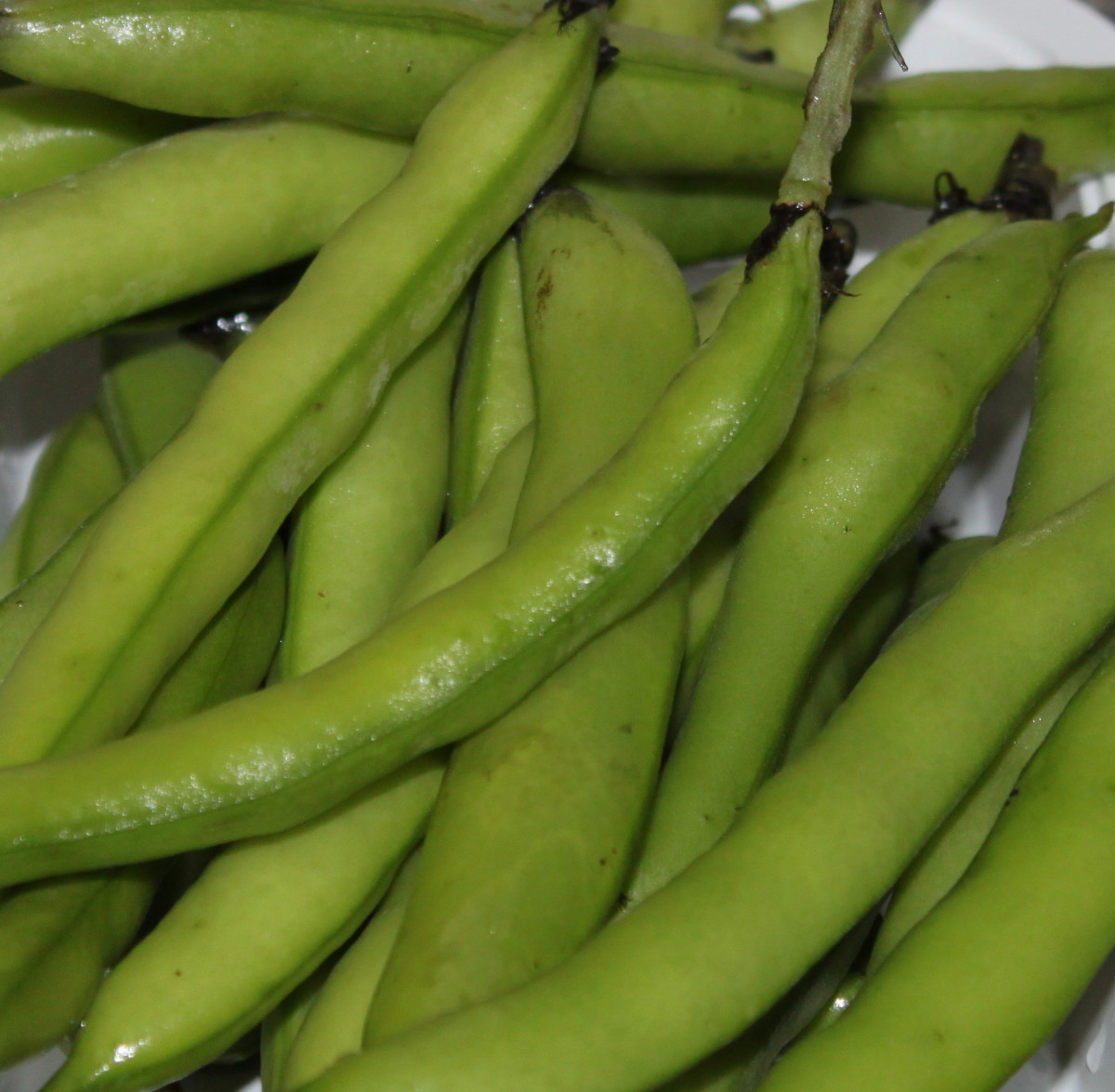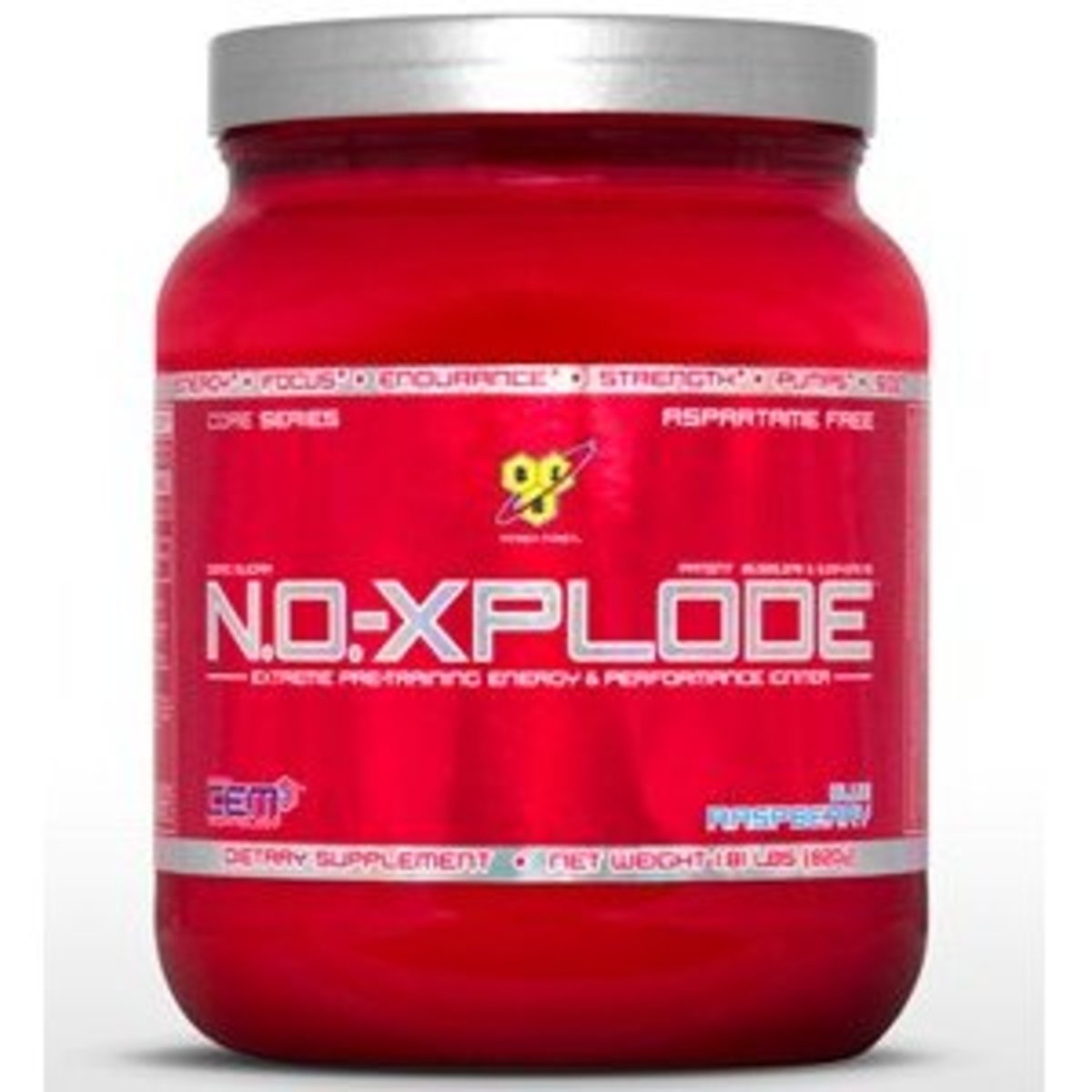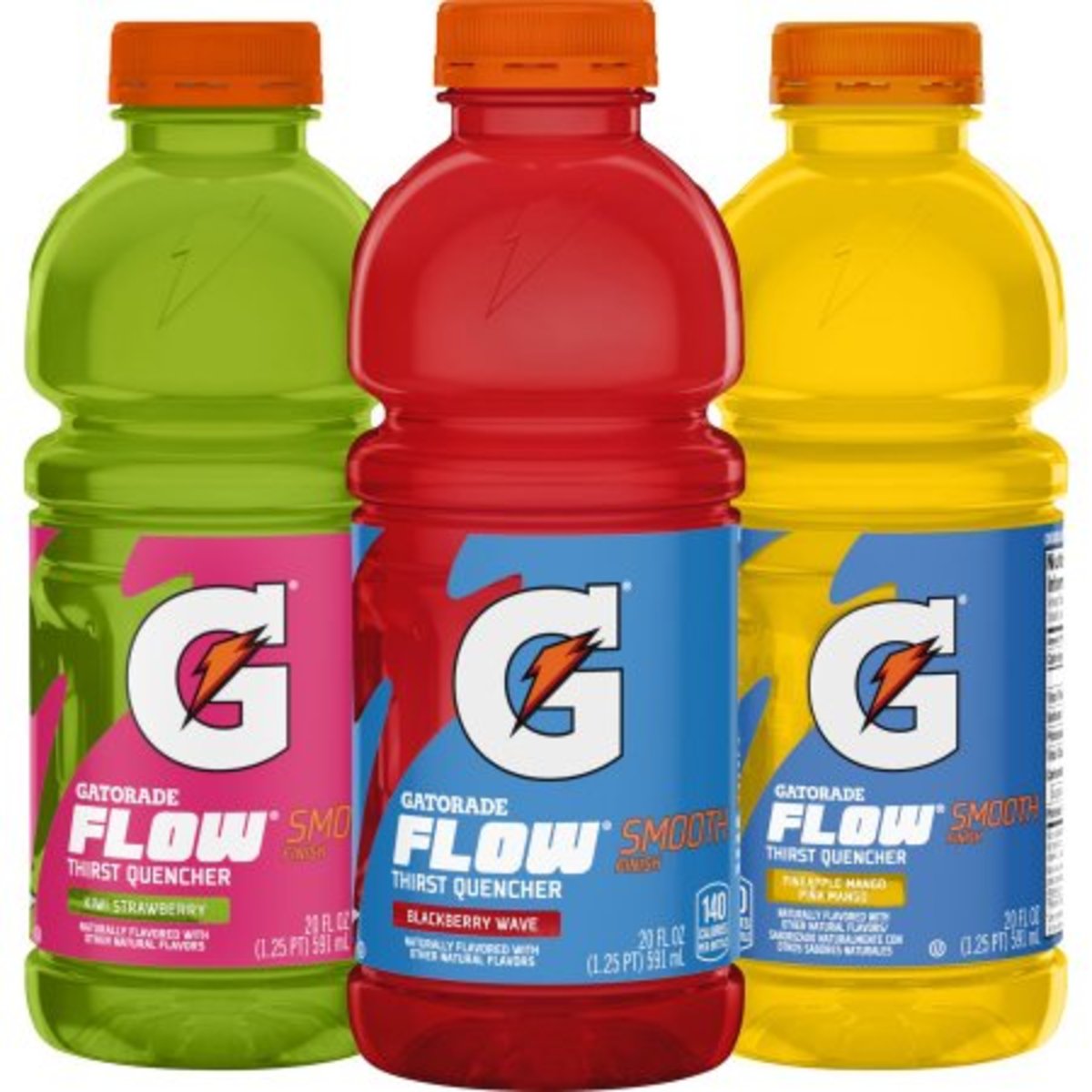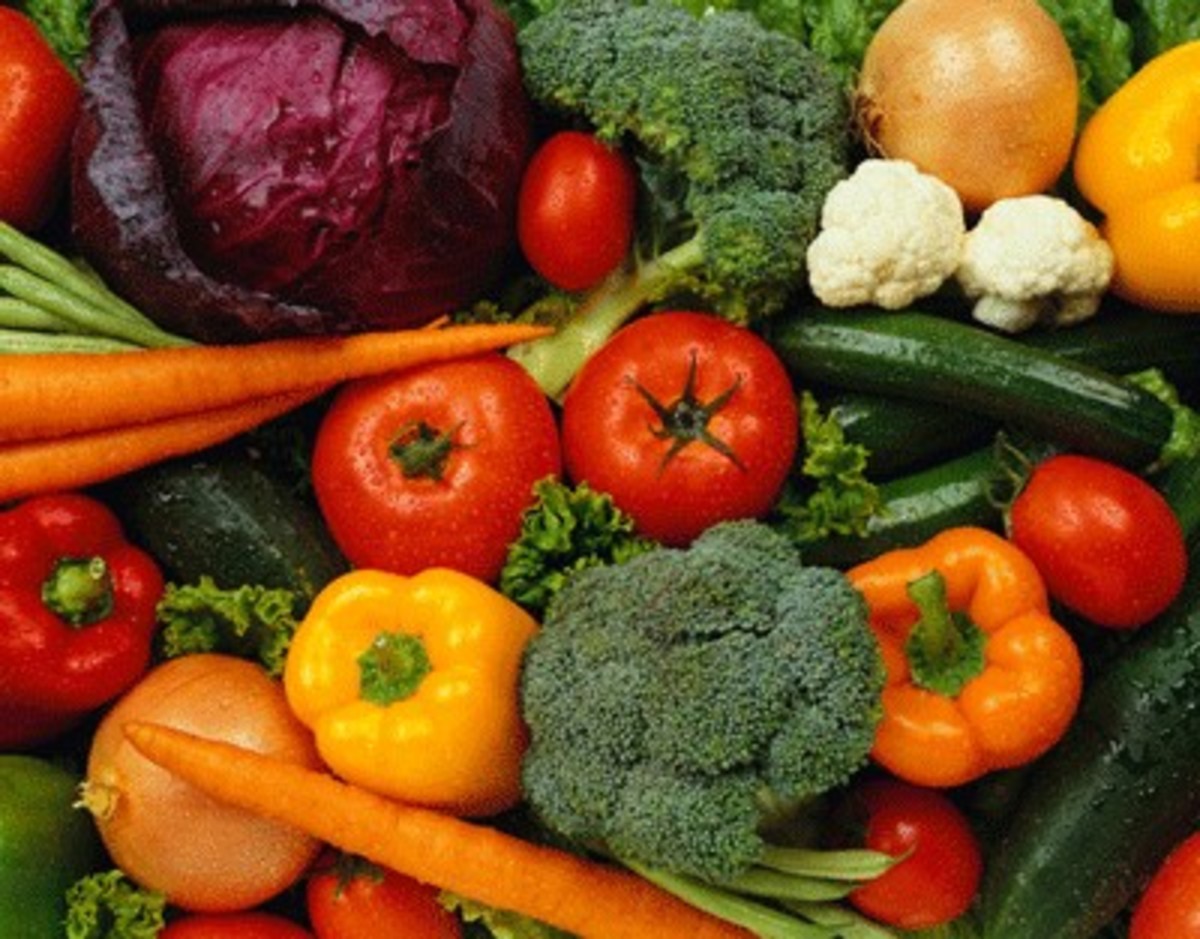How to Fit More Fiber Into Your Diet
Fiber: The What, Why, and How
Fiber - a dietary component most often associated with the relief of constipation. But what is fiber, really? What other health benefits does a high-fiber diet provide? What makes it so good for you? And how can you fit more of it into your diet, without subsisting on bran flakes and Metamucil?
What it is
Fiber is comprised of all the parts of plant foods that your body cannot digest. There are two categories of dietary fiber: soluble (those that are able to be absorbed in water) and insoluble (those that are not).
Why you need it
Insoluble fiber is what bulks up your stool, increasing the ease and speed of passage of digestive material through your colon. Everyone needs insoluble fiber in their diet, but it can be especially helpful for those with constipation, irritable bowel syndrome, or irregular stools.
Soluble fiber dissolves in water to form a gelatinous substance that can lower blood cholesterol and glucose levels, making it essential in the prevention of heart disease and diabetes.
In addition, fiber is known to make you feel fuller longer, making it an ideal tool for those who wish to lose weight. Foods high in fiber also take longer to chew, giving your body more time to register what you have eaten, and send the signal back to your brain that you are satiated.
How to get it
The National Academy of Sciences' Institute of Medicine recommends that adult males under 50 consume 38 grams of fiber a day (men 50+ should eat around 30 grams daily), and adult women should include about 25 grams (for 50+: 21 grams) in their diet. That may sound like a lot on its own, but there are some simple ways to ensure you are getting your fair share of fiber.
- Choose whole-grain breads and pasta over processed products.
- Eat more of your fruits and vegetables raw, leaving the skin on whenever possible.
- Replace juices with whole fruit to feel fuller and get more nutrition for the same number of calories.
- Snack on nuts instead of chips; the healthy omega-3 fatty acids will help you feel full, with the added benefit of fiber.
Below, I have included a table of a few high-fiber foods, as well as the Mayo Clinic's tips for including more fiber in your diet. Work them into your daily routine. Start slowly; a sudden change in fiber intake can cause intestinal gas. But once you see how easy it is to do, you'll no longer have to think about it. And your body will thank you. I promise.
List of High-Fiber Foods
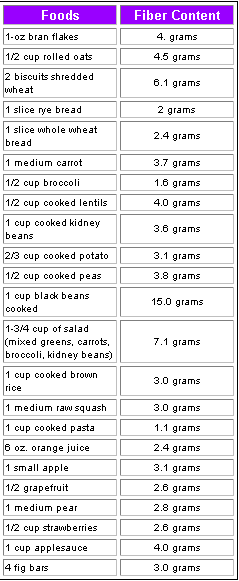
Tips From the Mayo Clinic
The Mayo Clinic (www.mayoclinic.com) offers these tips for fitting more fiber into your daily routine:
Start your day with a high-fiber breakfast cereal - 5 or more grams of fiber per serving. Opt for cereals with "bran" or "fiber" in the name. Or add a few tablespoons of unprocessed wheat bran to your favorite cereal.
- Add crushed bran cereal or unprocessed wheat bran to baked products such as meatloaf, breads, muffins, casseroles, cakes and cookies. You can also use bran products as a crunchy topping for casseroles, salads or cooked vegetables.
- Switch to whole-grain breads. These breads list whole wheat, whole-wheat flour or another whole grain as the first ingredient on the label. Look for a brand with at least 2 grams of dietary fiber per serving.
- Substitute whole-grain flour for half or all of the white flour when baking bread. Whole-grain flour is heavier than white flour. In yeast breads, use a bit more yeast or let the dough rise longer. When using baking powder, increase it by 1 teaspoon for every 3 cups of whole-grain flour.
- Eat more whole grains and whole-grain products. Experiment with brown rice, barley, whole-wheat pasta and bulgur.
- Take advantage of ready-to-use vegetables. Mix chopped frozen broccoli into prepared spaghetti sauce. Snack on baby carrots.
- Eat more beans, peas and lentils. Add kidney beans to canned soup or a green salad. Or make nachos with refried black beans, baked tortilla chips and salsa.
- Eat fruit at every meal. Apples, bananas, oranges, pears and berries are good sources of fiber.
- Make snacks count. Fresh and dried fruit, raw vegetables, and low-fat popcorn and whole-grain crackers are all good choices.
More Healthy Eating Hubs...
- What Does a Healthy Diet Look Like?
So many nutritionists spend so much time telling us what not to eat and how terrible crash diets are, we are left wondering just what we ought to be eating. We all know what a balanced diet isn't. So what does a healthy diet really look like? - Eating Healthy on a Budget
Attempting to balance your diet and your checkbook at the same time can be a trying ordeal. Use these four simple tips to help you make healthy, financially sound choices at the grocery store. - Low Fat Cooking Tips and Baking Substitutions
You've heard of substituting one ingredient for another, but how do you know what works, or how much to use? I've laid out below the substitutions I've found tried and true in my own kitchen that won't alter the texture or flavor noticeably, complete - Spring & Summer Fruits and Veggies
What's in season in spring/summer and how to choose fresh fruits and vegetables. - Fall & Winter Fruits and Vegetables
Fall and Winter fruits and vegetables, and how to choose ripe ones.


